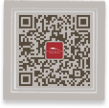- 中文
- EN
- Français
- 日本語
- 한국어
- 繁體中文
Exhibition of Ancient Egyptian Finds Launched in the Hunan Museum

It is said in the Arabian Nights that he who has never seen Cairo has never seen the world. Nourished by the Nile River, Egypt, one of the four great civilizations in the world is blessed with a long history and splendid culture. As a nation of mystery, it gave birth to many wonders: the towering Pyramids, grand columns of Temples and unique hieroglyphics… eliciting profound longing from people worldwide. Here, in order to let visitors know more about this mysterious and great nation, the Hunan Museum and the Egyptian Museum of Turin (Museo Egizio), Italy, co-organized the Exhibition of Ancient Egyptian Finds, which kicked off at 8:30 am, September 28th in the art hall of the Hunan Museum.
Hosted by Qiu Xiao (a well-known host in Hunan Province), the opening ceremony was attended by nearly one hundred people including leaders and media representatives from Hunan Provincial Department of Culture, Hunan Provincial Bureau of Cultural Heritage, the Egyptian Museum of Turin, Henan Museum, Liaoning Provincial Museum and Guangdong Museum etc. During the ceremony, addresses were made by Paolo Marini, curator of the Egyptian Museum, Samanta Isaia, deputy director of the Egyptian Museum, Li Jianmao, executive deputy director of the Hunan Museum and Liao Xing, leader from the Hunan Provincial Department of Culture).
As the first exhibition dedicated to the theme of ancient Egyptian civilization ever held in Hunan, it features over 230 pieces of collections from the Egyptian Museum of Turin, which included Sphinx statues, animal and human shaped mummies, potteries, toiletries, bronze and stone statues, stone and wooden coffins, stele etc, ranging from the Pre-dynastic period to Roman period, a span of more than 4000years, aiming to unveil the social life, religions, funeral culture and artistic achievements of ancient Egypt.
The Egyptian Museum of Turin, established in 1824 in Italy, is one of the oldest Egypt-themed museums in the world. Housing more than 30 thousand pieces of cultural relics from Pre-dynastic period to Copt period, the museum is the biggest collector of Egypt relics outside the Egypt, boasting of great academic significance.
This exhibition is divided into three parts. The first one –“Song of the Nile”-- reveals the evolution of life style and aesthetical awareness of Egyptian people: such items as fish-shaped color palette (Pre-dynastic period), alabaster apothecary jar (Middle Kingdom period), wooden comb (Byzantine period) well reflect their passion for personal adornment and enthusiasm for life. Also, in the exhibition are some partially presented murals about farming, a statuette of a scribe and mini model of cooks, which can provide vivid scenes of the daily life of the ancient people. The second part “multi-belief” shows the polytheism and zoolatry of the country via various temple models, bronze statues, amulets and animal mummies. One of them is the Ram-shaped Amun statue, symbol of Ra(God of the Sun), which was generally put at the entrance of temples to exert divine protection to the king and its people. Another statue well worth mentioning is Sekhmet, the God of Remedy, which distinguishes itself with a female body, a lion head, and a aggressively- shaped cobra disc lying atop. In the eyes of ancient Egyptians, Sekhmet (also referred as the God of Sun) is the embodiment of both destructive and healing power of the Sun. Both of the statues, dressed in robes, one seated and the other standing, were put around specific lakes of Egypt, delivering ancient people’s yearning for eternity. The third part “Immortal Legend” tells Egyptian’s concept of life and death through Khonsou pyramid, mummies, wooden coffins, mummy masks, Book of the Dead as well as ushabti (a small statue in funeral, on which the name of the dead is inscribed). Book of the Dead, also interpreted as “Book of rebirth” in local culture, consists of a large number of incantations and illustrations and has been a burial object since the New Kingdom period. The book in the exhibition is three meters long, covering 30 chapters of the original version. It is written in hieroglyphic and needs to be read from right to left. Generally speaking, the book is made of papyrus, and put under the head of the dead, which, people believe, can help the dead surpass all obstacles set in ghostdom and find their way to afterlife. Those authentic items can guide visitors to the land of mystery and help them get a full appreciation of its culture.
The exhibition is open to public at the first floor of the Hunan Museum from September 28 to December 5th, 2018. AR/VR service is provided in the morning of each Tuesday, Thursday and Saturday, whereby visitors can be well immersed in different scenes. Meanwhile, a series of relevant educational activities and lectures will be held during the exhibition time. Tickets are available on site, or reserved through the Hunan Museum APP and WeChat Official Account of the Museum.
Guide for Visit
Adult ticket: 30¥ perperson
Discount ticket: 15 ¥ perperson (full time students in college or below, soldiers on service, and low income residents. All should come with valid documentation)
Free: Old people above 65 and the disabled (with valid documentation ), children under 1.3 meters.
Exhibition time: September 28—December 5, 2018
Opening hours: From Tuesday to Sunday, 9:00—17:00 (last entry at 16:00) Closed on Mondays (except statutory holidays) and on Chinese Lunar New Year’s Eve.
Exhibition venue: the first exhibition hall on the first floor of the Hunan Museum
Tel number: 07312-84415833, 84475933
About AR/VR Service
AR:You can explore the secrets of Anubis in this digitally constructed ancient temple and get a thorough access to the dream of immortality.
VR: With the help of high technology, you can get into the tomb of Queen Nefertari, which, according to legend, lies in the Valley of Queens and fully appreciate the art and stories within.
Time: 9:30-10:00,10:30-11:00 on each Tuesday, Thursday and Saturday of the exhibition time (October 1, 3, 5, 7 are the open days during the National Holiday). More changes are subject to official notice.



